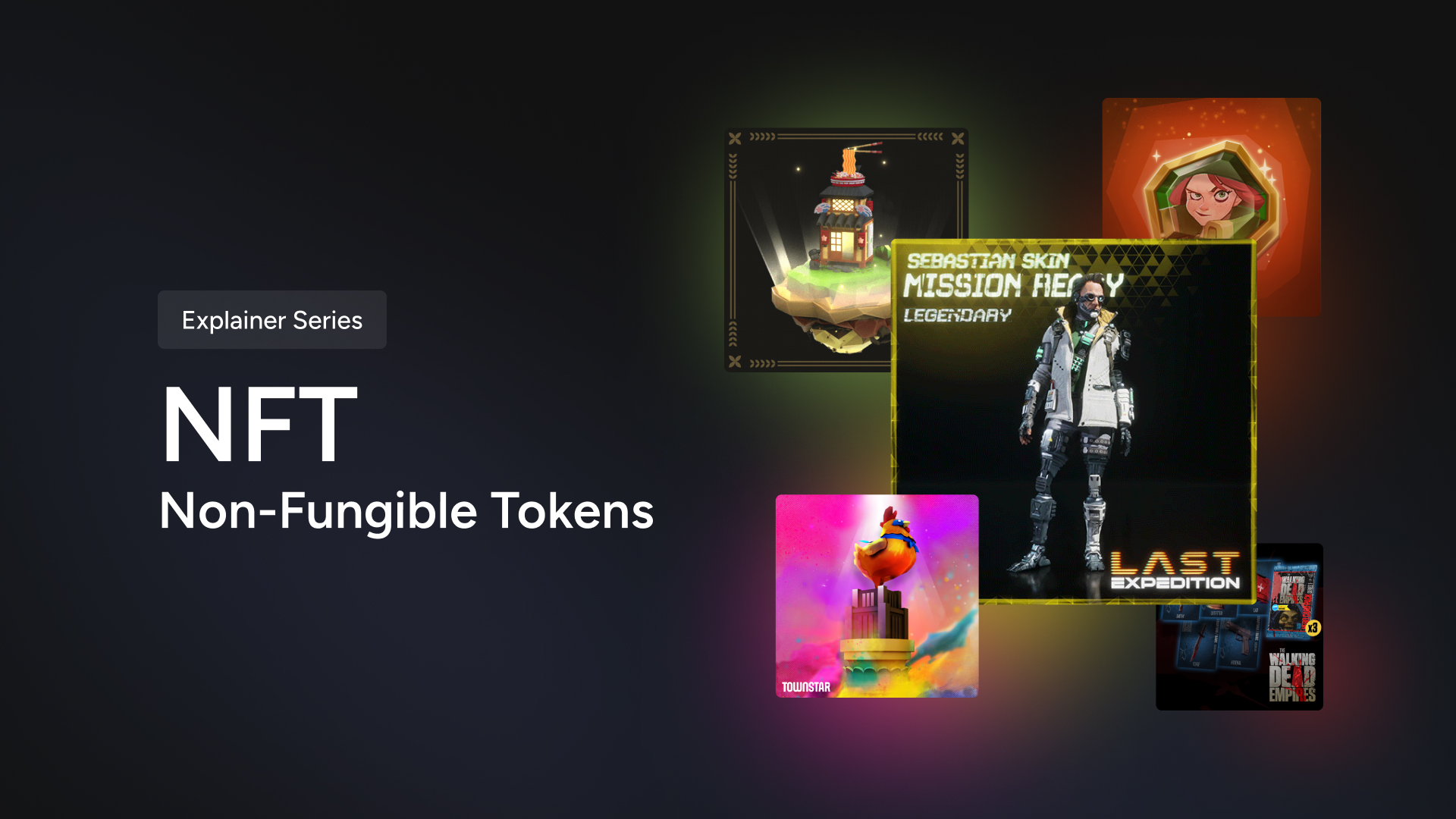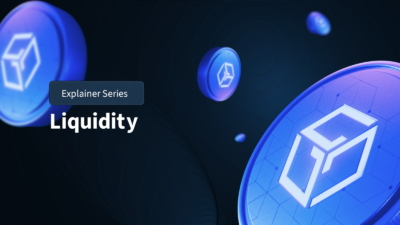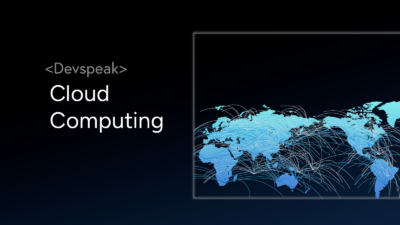What are NFTs?
Imagine owning a unique digital collectible, like a piece of art, a video clip, or an in-game item, that you can prove you own and can trade securely. This is made possible by non-fungible tokens, or NFTs. An NFT is a type of digital asset that represents ownership of a unique item or piece of content, verified through blockchain technology. Unlike cryptocurrencies such as Bitcoin or Ethereum, which are fungible and can be exchanged on a one-to-one basis, NFTs are unique and cannot be exchanged on a like-for-like basis.
Gala Games first started creating NFTs in 2020, such as playable items for Town Star (now known as Common Ground World), building and land deeds for Mirandus and more. The unique capabilities of NFTs is especially demonstrable in gaming, where players want the freedom to own the gaming items they collect. For the Gala ecosystem as it continues to grow, the endless possibilities of NFTs have already been extended far beyond gaming.
How Do NFTs Work?
To understand NFTs, let’s break down their key components and processes:
1. Tokenization
Tokenization is the process of creating a digital token on the blockchain to represent an item (digital, physical or conceptual). Ownership of the token is then ownership of whatever the token represents. For example, the owner of a Mirandus Homestead NFT will also be the owner of a piece of real estate in the world of Mirandus – specifically, a Homestead to use as their home base in the game.
2. Blockchain Technology
NFTs are typically built on blockchain platforms such as the widely known Ethereum Virtual Machine. Each NFT is recorded on the blockchain, ensuring transparency and immutability. This means the ownership and transaction history of the NFT are publicly verifiable and cannot be altered. Another term for this is immutability.
3. Smart Contracts
NFTs use smart contracts to define the terms of ownership and transfer. These contracts automatically execute when certain conditions are met, ensuring secure and transparent transactions. Smart contracts allow NFTs to have functions, utilities and behaviors, or special unlocked perks for owners.
4. Metadata
NFTs include metadata that describes the unique properties of the token, such as the creator, description, and any associated media files. This metadata is stored on the blockchain and often includes a link to the digital asset.
Why are NFTs Important?
NFTs are transforming the way we think about ownership and value in the digital world. Here are some key reasons why NFTs are important:
Proof of Ownership
NFTs provide indisputable proof of ownership of a digital asset. This is particularly important for artists, musicians and creators who want to authenticate their work and ensure they are recognized and compensated for their creations. Additionally, it is important for collectors interested in maintaining the value of their collected asset.
Scarcity and Value
NFTs can represent scarce digital assets, creating value through rarity. Collectors and enthusiasts are sometimes willing to pay significant amounts for unique digital items, much like rare physical collectibles. One clear (but often overlooked) benefit to collecting digital items versus physical items is that there is no deterioration of quality over time. For example, a digital trading card has no need to be properly stored or protected from the sun. There is no need for quality or conditional grades in terms of digital collectibles. No matter how much they are used or traded, the quality and integrity of the item will remain the same, unless a degradation mechanic is programmed into the associated smart contracts.
Interoperability
NFTs can be used across different platforms and applications. For example, an NFT representing an in-game item can be traded or used in various games or virtual worlds, enhancing its utility and value. In the more recent web3 world, this has been demonstrated by numerous bridges, which allow tokens to migrate from one blockchain to another. The bridge is an appropriate analogy for this action, as different blockchains are typically divided by rivers of variation in how they operate.
Royalties and Revenue
Smart contracts enable creators to earn royalties every time their NFT is resold. This ensures that artists and creators can continue to benefit from the increasing value of their work. This is simply demonstrated on Ethereum’s most popular secondary marketplace, OpenSea, where NFT collectors list collections that can then be traded peer-to-peer among blockchain users. Whenever an item is traded, the original creator receives a portion.
On Gala Games, smart contracts can enforce revenue shares with second and third party creators whenever NFTs are sold in primary sales. On Gala Music, artists can arrange their track’s NFT sales to automatically split revenue with parties of their choice, making it easy for them to work with an agent, producer or collaborator.
Innovation and Creativity
NFTs are driving innovation and creativity in various fields, including art, music, gaming and sports. They offer new ways for creators to monetize their work and engage with their audience. Over the past several years, the overall quality of digital art has been elevated by the existence of non-fungible tokens, and artists have enjoyed new ways to monetize their creativity.
Real-World Applications of NFTs
Digital Art
Artists can create and sell unique digital artworks as NFTs. This allows them to reach a global audience and receive direct compensation for their work. High-profile sales, like Beeple’s “Everydays: The First 5000 Days,” which sold for $69 million, have brought significant attention to NFTs in the art world.
Music
Musicians can tokenize their music, offering exclusive tracks, albums, or concert tickets as NFTs. This provides a new revenue stream and a way to connect with fans. Gala Music has already been pioneering in this field for some time, giving artists new ways to interact with their fans and monetize their art.
Gaming
On Gala Games, smart contracts make it easy to work with second and third party creators whenever NFTs are sold in primary sales. On Gala Music, artists can arrange their track’s NFT sales to automatically split revenue with parties of their choice, making it easy for them to work with an agent, producer or collaborator.
Film
Earlier this year, Gala film hit the ground running with a solid plan to revolutionize the film industry through tokenization and web3 tech. Creating a way for viewers to watch exclusive content freely with no subscriptions or fees while also receiving rewards for their activity, Gala Film is taking filmmakers and film fans deeper into the stories.
Sports
Sports franchises and athletes are leveraging NFTs to create unique fan experiences. Collectible NFTs, such as digital trading cards and highlight reels, offer fans a way to own a piece of sports history. NBA Top Shot, a platform for buying and selling officially licensed NBA collectible highlights, has become incredibly popular.
Virtual Real Estate
NFTs are also used to buy, sell, and trade virtual real estate in digital worlds and metaverses. Platforms like Decentraland and The Sandbox allow users to own and develop virtual land, creating new opportunities for investment and creativity.
Gala Games has already explored many forms of digital real estate, such as the Taverns in TCG Legends Reborn that allow players to host PvP matches for a share of the rewards, buildings and estates in Mirandus, or even entire planets in Echoes of Empire.
GalaChain and NFTs
The GalaChain ecosystem, powered by the $GALA token, is at the forefront of integrating NFTs into gaming and entertainment. Here’s how GalaChain utilizes NFTs:
In-Game Items
GalaChain allows players to own and trade many of their in-game items as NFTs, providing true ownership and the ability to monetize their gameplay.
Interoperability
NFTs on GalaChain can be used across various games and applications throughout the ecosystem, making it possible for creators and owners to enhance their utility.
Creator Tools
Through the GalaChain Creators Portal, GalaChain provides tools for creators to develop and deploy their own NFTs, fostering innovation and expanding the ecosystem’s offerings.
The Future of NFTs
As NFTs continue to evolve, their potential applications and impact are vast and far-reaching. Here are some trends to watch:
Mainstream Adoption
As awareness and understanding of NFTs grow, we can expect to see broader adoption across various industries. More artists, musicians, brands and businesses will explore NFTs as a way to engage with their audiences and monetize their digital items.
Enhanced Utility
Future developments will focus on enhancing the utility of NFTs, enabling more complex and interactive applications. This could include NFTs that evolve over time, integrate with physical items or offer access to exclusive experiences and communities.
Interoperability and Standards
Improving interoperability between different blockchain platforms and establishing industry standards will make it easier for NFTs to be used across various applications and ecosystems. Interoperability has always been a cornerstone of Gala’s approach to web3 empowerment.
Sustainability
The environmental impact of NFTs, particularly on energy-intensive blockchains like Ethereum, is a concern. Future developments will focus on creating more sustainable and energy-efficient blockchain solutions for NFTs such as GalaChain.
5. Regulatory Frameworks
As NFTs gain popularity, regulatory bodies will develop frameworks to protect consumers and ensure fair practices. Clear regulations will help legitimize the NFT market and encourage responsible innovation.
NFTs Aren’t Going Anywhere
NFTs are revolutionizing the concept of digital ownership and creating new opportunities for creators, collectors and users. By leveraging blockchain technology, NFTs offer secure, transparent and verifiable proof of ownership, transforming industries from art and music to gaming and sports.
Ecosystems like Gala are at the forefront of this revolution, integrating NFTs into gaming and entertainment in innovative ways while facilitating the development of NFT capabilities across multiple world industries. As the technology continues to evolve, NFTs will play an increasingly important role in the digital economy, driving innovation and creating value in the web3 era.
Stay tuned for more blogs in our explainer series, where we’ll dive deeper into the fascinating world of Web3 and its key concepts!





